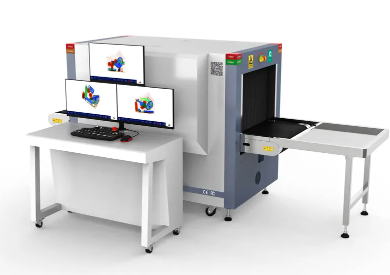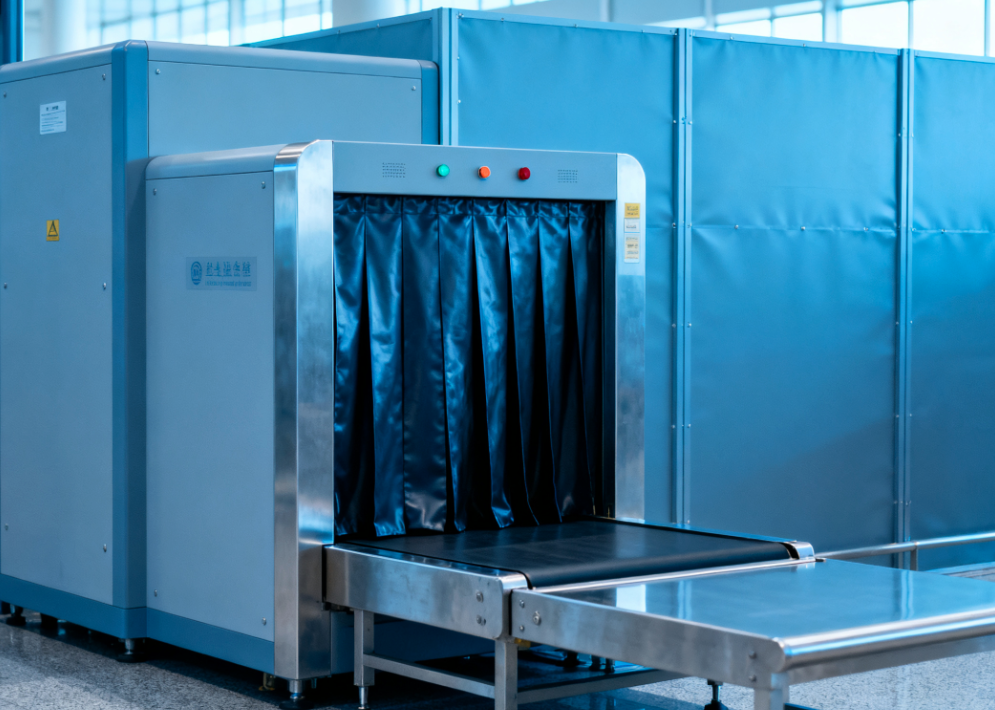Views: 34 Author: Site Editor Publish Time: 2025-09-23 Origin: Site








Air travel has become faster and more convenient, but safety remains a top priority. One of the most important tools airports use today is the x-ray baggage scanner. These machines allow security staff to see inside luggage without opening it, helping to detect hidden weapons, explosives, or other dangerous items.
Many travelers wonder: Are x-ray scanners safe? Do they expose me or my belongings to harmful radiation? In this article, we will explore the science behind x-ray baggage scanners, how they work, the types of radiation they use, and the strict safety measures in place to protect both passengers and airport staff. By understanding how these devices function, travelers can feel confident about their safety while flying.
X-ray baggage scanners are devices used at airports to look inside luggage without opening it. They help security staff find hidden threats like weapons, explosives, and other prohibited items. These scanners use energy called x-rays to create images that show what is inside a bag.
There are two main types of scanners:
Carry-on scanners: Small machines for passenger bags.
Checked baggage scanners: Large machines for cargo and suitcases.
They work quietly and quickly, so travelers rarely notice the process. The technology has been evolving since the 1970s. Today, scanners are faster and safer than ever.
Key Points:
Reveal items that metal detectors miss.
Help reduce security delays.
Operate automatically with minimal human handling.

Scanners use x-rays, a type of electromagnetic radiation. They can pass through most materials. Metals, liquids, and dense objects absorb more x-rays and appear darker on images. Soft materials allow x-rays through, appearing lighter.
Two main imaging methods exist:
Transmission imaging: X-rays pass through the object to sensors behind it.
Backscatter imaging: X-rays bounce off the object and return to the machine.
Here’s how it happens:
The machine emits x-rays.
X-rays interact with luggage contents.
Sensors detect absorbed or reflected rays.
Software converts the data into a detailed image.
Table: X-Ray Interaction with Materials
| Material Type | X-Ray Absorption | Appearance on Image |
|---|---|---|
| Metal | High | Dark |
| Plastic | Low | Light |
| Liquids | Medium | Gray |
| Electronics | Medium-High | Darker Gray |
The image helps TSA officers quickly find suspicious items. It works for anything from a small knife to large electronics.
Radiation is a natural part of our environment and comes in various forms, each with different characteristics and potential impacts on human health. Understanding the distinction between ionizing and non-ionizing radiation is crucial for assessing their safety and applications.
Ionizing radiation is a powerful form of radiation that has enough energy to remove electrons from atoms, creating ions. This type of radiation is used in x-ray scanners, which are designed to penetrate materials like bags and luggage to detect hidden items. While ionizing radiation can be harmful at high doses, these scanners are carefully controlled and regulated to ensure safety.
On the other hand, non-ionizing radiation has lower energy levels and does not ionize atoms. Instead, it causes atoms to vibrate or move slightly, without causing significant changes to their structure. Devices like metal detectors and millimeter wave scanners use non-ionizing radiation, which is considered completely safe for passengers. These devices are widely used in airports and other security checkpoints to detect metal objects and provide detailed images of items hidden beneath clothing.
To summarize:
Ionizing radiation is used in x-ray scanners.
Non-ionizing radiation is used in metal detectors and body scanners.
The safety of x-ray baggage scanners is a top priority. These scanners are designed with multiple layers of protection to ensure that radiation is contained and does not pose a risk to users or bystanders.
One of the key safety features is heavy shielding. Typically, x-ray scanners are enclosed in lead walls and have lead curtains at the entry and exit points. This shielding is highly effective at blocking radiation, allowing only a very small, safe dose to pass through the luggage being scanned.
In addition to physical shielding, x-ray scanners are equipped with several other safety mechanisms:
Warning Lights and Alarms: These alert users if there is any malfunction or if the radiation levels exceed safe limits.
Locks: These prevent unauthorized access and ensure that the scanner is only operated by trained personnel.
Sensors: These continuously monitor for any radiation leakage, providing real-time data to ensure that the scanner is operating within safe parameters.
Regulations play a crucial role in maintaining safety. Authorities set strict limits on the amount of radiation that can be emitted by these machines, ensuring that the levels are well below those considered harmful. Regular testing and maintenance are also required to verify that the scanners are functioning correctly and safely.
| Safety Feature | Description |
|---|---|
| Heavy Shielding | Lead walls and curtains block most radiation. |
| Warning Lights and Alarms | Alert users if radiation levels are too high. |
| Locks | Prevent unauthorized use. |
| Sensors | Continuously check for radiation leaks. |
| Regulations and Testing | Ensure radiation levels are safe and scanners work properly. |

To better understand how these safety features work, imagine a metal box with thick walls and curtains. This box is designed to block most of the radiation energy, allowing only a small, safe dose to pass through the luggage. The combination of physical barriers, safety mechanisms, and strict regulations ensures that x-ray baggage scanners are safe for both operators and travelers.
Radiation exposure from scanners is extremely low, and understanding this in the context of everyday activities can help put things into perspective. For instance, the radiation dose from an x-ray baggage scanner is typically around 0.0001 mSv. This is less than the amount of radiation you would receive from eating half a banana. In contrast, a dental x-ray exposes you to a dose of about 0.005 mSv, which is a small medical dose. Even a long-haul airplane flight exposes you to around 0.05 mSv of cosmic radiation. It’s important to note that the radiation from scanners only affects the luggage, not the passengers. Even TSA workers who operate these scanners are far below the daily safe limits for radiation exposure.
In summary, the radiation levels from scanners are minimal compared to many common activities. This helps to reassure travelers that the exposure they receive is negligible.
Quick Tip:
Everyday activities expose you to more radiation than scanners do. Moreover, safety standards for radiation exposure are strictly enforced to ensure that everyone is protected. So, there’s no need to worry about radiation from scanners.
It’s natural to have concerns about radiation, but many of the common fears are based on misconceptions. Some people worry that scanners can damage electronics, cause cancer for frequent flyers, or affect operators over time. However, scientific evidence shows that these concerns are unfounded.
For example, electronics are perfectly safe when passing through scanners. The images are generated from x-rays, not from heat. The radiation doses from scanners are extremely low, and proper safety protocols are in place to protect operators. These protocols include heavy shielding, regular maintenance, and strict regulations that limit radiation exposure.
Myth-busting List:
Here are some common myths and the facts that debunk them:
Myth: X-rays pass through your body. → Fact: Scanners only expose the luggage, not the passengers.
Myth: Frequent travelers risk cancer from radiation exposure. → Fact: The dose of radiation from scanners is tiny and poses no significant health risk.
Myth: Film or electronics get ruined by the radiation. → Fact: Modern scanners are designed to be safe for all types of items, including film and electronics.
By understanding the facts and debunking these myths, it becomes clear that scanners are a safe and effective way to ensure security without posing any significant health risks.
A: Yes, modern scanners use low-energy radiation and don’t damage items.
A: Most, including small weapons, explosives, and liquids.
A: No, they should not. Special procedures apply.
A: Regular inspections and certifications ensure compliance.
X-ray baggage scanners are a key part of modern airport security, using controlled ionizing radiation to keep travelers safe. The machines are carefully designed with shielding, sensors, and strict regulations to ensure radiation exposure is minimal. Everyday activities actually expose people to far more radiation than a baggage scan.
Companies like Safeway Inspection System Company Limited specialize in designing and manufacturing advanced x-ray scanning systems that meet the highest safety and performance standards. Their equipment helps airports and security facilities efficiently detect hidden threats while keeping operators and travelers safe.
By understanding the science and safety protocols behind these scanners, it’s clear that they provide effective security without significant health risks. With Safeway Inspection System Company Limited’s solutions, travelers can feel confident, and security staff can rely on cutting-edge technology to maintain safety. Staying informed helps reduce anxiety and allows passengers to focus on their journey, knowing that airport security is both effective and safe.
0086 13670213490